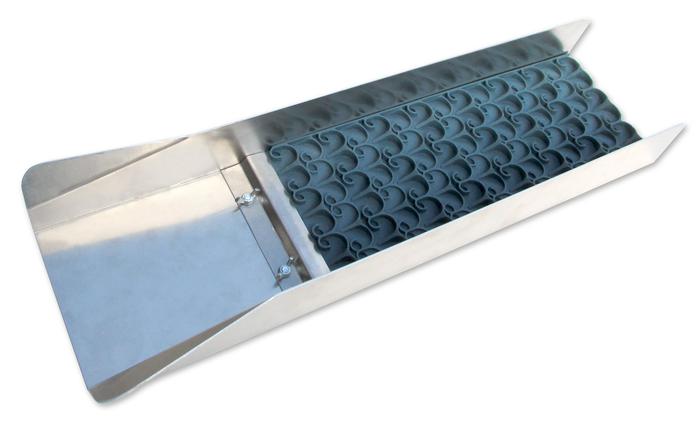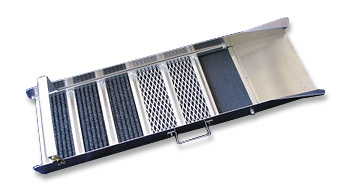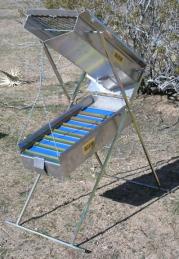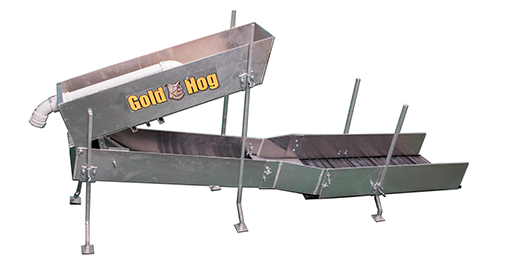Monday, February 19 2024
Gold is generally considered a time-tested safe-haven asset, the price of which has historically held up well in times For those of us afflicted with gold fever and who enjoy prospecting and mining as a hobby, the price of gold doesn't make much difference. Most small-scale prospectors seem to get much more pleasure from the process of finding the gold rather than selling it. It's the thrill of the hunt! And, of course, all the great memories you make. Plus, it's just plain old fun buying a new highbanker or gold wheel. Even if you have no intention of selling any of the nuggets or fine gold you recover, you still might be wondering where the price is going from here. Whether or not gold has reached its peak is a point of contention.What drives the price of gold can be confusing and conflicting. While other commodities are mostly driven by supply and demand, gold is often affected by the psychological effects of economic downturns. Gold prices are affected by numerous economic factors such as: • Value of the U.S. dollar Numerous factors influence gold pricing, so no one person or organization is fully responsible for setting prices. However, the London Bullion Market Association (LBMA) publishes gold prices twice a day via the ICE Benchmark Administration (IBA). The IBA consists of multiple banks, an oversight committee and a panel of internal and external chair members. The IBA sets gold spot prices and gold fixed prices based on supply and demand as well as the gold futures derivative markets. If you do want to sell your gold, you can sell to a variety of buyers, including precious metals dealers, refiners, coin dealers, and jewelry makers. Research potential buyers and compare prices before selling to ensure you receive the best possible price.The amount of market value you can get depends on several factors: • Quality and Purity: The value of gold is determined by its weight and purity. Higher-quality, purer gold is worth more than lower-quality, less pure gold. A gold prospector will typically have their gold assayed to determine its quality and purity.
Friday, September 30 2022
In an area either rumored or known to hold gold, where should you look first? The creek, the surrounding hills, washouts, or just where? The characteristics of the gold in that area will help you to know where to start. If the gold is flat and pounded, that indicates it’s been in the water a long time. If the gold is coarse and chunky, you know you’re getting closer to the source. When gold is smoother, stop and go back to the coarsest gold and start working upwards until you find the source.
Keep in mind that gold is gold, so there isn’t necessarily a better type of gold. Some is just easier to recover. There are only two types 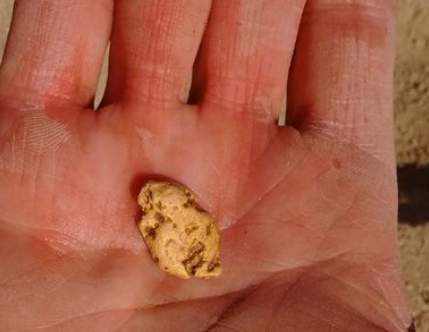 of gold deposits. The first type is “lode” which is simply everything that is still in the matrix and in the ground, and the other is “placer” —or everything else. of gold deposits. The first type is “lode” which is simply everything that is still in the matrix and in the ground, and the other is “placer” —or everything else.Lode deposits refer to gold that is still locked within its original solid rock formation. This formation of gold generally starts as a vein in rock and is formed over millions of years. Since the gold is locked up in rock, and can be mixed with quartz, calcite, pyrite, and other minerals, lode gold usually requires specialized mining techniques to extract. Lode mining takes a lot more equipment and generally a lot more expense and is usually undertaken by large commercial operations instead of the average prospector. Placer gold is the gold that most prospectors are more familiar with. Placer gold isn’t really any different than lode gold. It is simply a concentration of that same gold that has eroded and traveled away from the vein. Since gold is very dense, it will move downhill much slower than the surrounding sediment. It tends to become concentrated on or near the surface of the lode, forming a “residual placer” close to the original bedrock exposure. Gold found downhill from the immediate outcrop above the nearest watercourse is called an “eluvial placer.” Once it reaches the nearest waterway and is transported by flowing water, the gold now is known as “alluvial placer.” The origin of the dust, flakes and nuggets found by panning and sluicing is usually from a vein up on a nearby mountain. Bench placers were originally stream placers. Benches are simply where the water used to be, maybe even millions of years ago. They are formed by erosion or geological events such as uplifts, earthquakes or plate drops that changed the stream flow. Some of the most profitable mining is performed on benches. Many benches are highly concentrated by the alluvial deposits that still feed them. Stream deposits are the last resting place for gold. Once the gold has been released from the lode, gravity and nature does the rest. And unless gold gets stranded on a bench, it will find its way to the water someday. It may take a million years, but it will get there. When deciding where to begin prospecting, most of the time you’ll want to start panning in a water way, or a wash in the desert where water once flowed. Then let the gold tell you where to go from there. When the gold gets coarse and ragged, start to move up, looking in reverse of how it got to the spot where you found it. In addition to panning and sluicing you may wish to upgrade your mining efforts with a highbanker or power sluice, dredge or trommel. Moving soft soil or river gravel is obviously much easier than breaking rock, but for small scale miners, a rock crusher can pulverize 2 or 3 inch sized rocks into powder in no time. Move more material faster— get more gold! Friday, October 01 2021
Sluicing is one of the most popular gold-recovery methods, and a sluice box is often a miner’s first purchase after a basic gold pan. There are many options to consider— riffles, matting, brands, and sizes. You might want to stick with traditional z-riffle sluices with ribbed matting and miner’s carpet, try the new mini or vortex Dream Mats without riffles, or a combination of different types of miner’s moss. No matter what you choose or upgrade to, sluicing techniques are fairly straight forward. The three main things to concentrate on for best gold capture are: proper selection and set up, material classification and processing, and monitoring. These three key steps will allow you to maximize gold recovery. Proper Set Up. This is by far the most important aspect of gold separation and recovery and includes angle, horizontal leveling, and water flow. Improper sluice angle is probably the most common error most miners make. The old rule of thumb of setting your sluice to “one inch per foot” is just a starting point and can result in too much water velocity. Too much water leads to improper breakdown and separation of heavy concentrates and material moving through the box too quickly, which can mean loss of fine gold. A Sluice Setter Digital Pitch Gauge can help, and so can focusing on water velocity instead of just the angle. Try the “one second per foot” method. Measure 12 inches down your sluice and mark that spot. As you feed material into your sluice using a side-to-side motion, count “one thousand one.” Your material should be passing the 12 inch mark as you finish that count. If it needs to be faster, increase the rear angle. If it needs to be slower, decrease the rear angle. As material travels down the sluice, be sure you are utilizing the entire capture area. If material is being forced to one side or the other, leaving one side clogged with too much material, while the other side is not processing at all, it could mean the sluice is not properly leveled horizontally. Material Classification and Processing. In order to capture small gold in quantity, finer classification is usually necessary, even though it’ll take more time to do so. Processing speed and the volume of material to put into the sluice (by hand or by scoop) must be matched to the volume and velocity of the water. If too much material is introduced into the flow, the water velocity will slow down causing the sluice to back up and lose gold. Gradually add smaller amounts of material to the flow using a wide scoop. Monitoring Your Sluice. When using stream flows, you are bound by the characteristics of that waterway—water speed, depth, and the ability to change your sluice angle. Mechanical flow is not limited by nature since you can control it. But no matter who is controlling the water (you or Mother Nature) monitor two factors while running gold-bearing material: how the sluice is processing the material, and the capacity of your sluice. How much can the sluice hold before it loses the ability to separate heavy materials and capture gold? If you see movement of heavy material down the sluice or movement of captured gold, it’s time to remove your sluice from the river, clean it, and reset it. When processing difficult material, set up a regular cleaning schedule so you don’t lose gold. Applying these three main techniques while sluicing — proper selection and set up, material classification and processing, and monitoring — will allow you to adapt to changing conditions no matter the type or brand of sluice box you prefer. And remember that old saying "practice makes perfect" — using the same gold-bearing paydirt over and over again means you can learn these techniques and tips much quicker and recover more gold! Monday, November 16 2020
The use of water for grinding and milling has been in practice for thousands of years. From simple water wheels to inventors such as Water Flow. The easiest example of how water dynamics affect gold is the classic inside bend in a waterway. When stream flow is straight and velocities are at their highest, gold will be suspended in the flow. As a bend in the stream causes flow to begin slowing down, the heaviest gold begins to drop out because the water no longer has enough velocity to suspend the material. The stream continues to lose power as the bend length increases and smaller and smaller gold continues to be deposited until there is no longer any in suspension, or the remaining water flow and speed cannot carry it farther downstream. Water velocity and flow affect attempts at recovery in all capture devices in exactly the same way. Each piece of gold in classified material requires a certain flow and length of time to separate, drop out, and be captured based solely on its relative size and weight. If the velocity and flow are too great, the gold will remain suspended and will exit the machine regardless of machine length or method of recovery. This is why some miners are lured into a false sense of security just by using longer sluices. Improper water depth in the sluice can create additional problems in recovery. Methods of material collection have much less effect if the gold is suspended in the upper part of the water flow. Most sluices provide little or no material agitation to break up the classified material and provide the necessary change in flow that facilitates gold separation. Lack of agitation allows smaller pieces to be carried through the equipment. Classification. There is a direct relationship between material classification and water speed, which is often overlooked. It is common to classify for ease and speed of filling buckets rather than size of gold being targeted. Larger classification requires increased water speed to push the material through most recovery systems. The trade-off is forfeiting recovery of finer gold by increasing the length of drop time. This reduces the number of gold capture attempts and even machine effectiveness by having concentrations of larger material wedging into riffles, drops, etc. Running dry material requires the sluice to liquefy the material while it is passing through. Gold particles will suspend in the dry material, reducing the chance of capture. Many miners use a scoop and drop their material into the machine in large clumps. This also allows particles to suspend instead of being processed. Material should always be wet prior to processing, and material should be cast (sprinkled) side to side across the machine when using a scoop. Riffles. Some riffle designs are actually not that ideal for gold recovery. Some sluice riffles are evenly spaced, making them too far apart to impart the “vortex” or reverse underflow. What actually happens is an up-and-down wave motion as the water travels down the sluice. The only “action” imparted is the same negative flow that happens when water flows over a rock or some other obstacle in a stream. Material suspended at the bottom of the flow is deposited as the water climbs over the riffle and slows. Material that is heavy enough and can no longer be suspended drops. The rest of the material remains in the flow and continues to be carried down (and possibly out of) the sluice. Flare. Most modern riffle sluices (standard and drop designs) are susceptible to improper setup angle, which can either clog the machine with material or blow it out completely. Either problem results in the loss of gold. Another big mistake in sluice design and operation is the “V” fallacy. The idea that channeling your water towards the center of the sluice using a wide-angle flare will increase its effectiveness and therefore increase gold recovery is false. On top of that, miners drop material into the center of the slick plate. This forces material into the center of the sluice, which is quickly overloaded by the volume of material and will cause the first series of riffles to lose their effectiveness. Remove the flare from your sluice to eliminate the center concentration and create an even flow across the machine. You can create a V-shaped wing dam with a short straight section in front of your sluice if you need increased water flow or speed. Casting your material across the width of the sluice will eliminate overloading of the riffles. Understanding how water height and speed changes your recovery can also make all the difference in boosting gold returns: Water height. Begin with the water flowing just above the riffles or drops. Run small amounts of material and watch as the dirt passes through the sluice. Notice how the material enters the riffles or droops. Be sure to use the correct method of casting material evenly from side to side. Gradually increase the water height until processing suffers. This will determine the minimum and maximum water height for your sluice or highbanker. Water velocity (speed). Set your sluice water height for max processing and a fairly fast flow, then gradually reduce water speed as you process small amounts of material. You may have to adjust your sluice to maintain proper water height through this process. Note how changes in water speed decrease the quality of material processing. Spend some time exploring water dynamics. Introduce only one variable at a time, and verify how your gold recovery is affected before moving on. No doubt, with a little more understanding and experimentation, you’ll recover more gold with your sluice! Thursday, January 30 2020
Anyone who prospects for gold knows how elusive it can be. Even when you’re for certain on “good ground,” you can end the day with not much to show for your efforts. On the other hand, you may have a really great day and recover some of the shiny stuff, only to return to the same spot at a later date and find nothing. Often, the amount of gold you recover changes when you use a different piece of equipment or a different accessory. Sometimes it’s the weather that exposes or releases gold after a flood or storm. The environment can change, but sometimes the positive difference can be new places to look for gold. Besides hiding in the usual places in streams and on dry land— in crevices, behind boulders, in the roots of plants and trees, in tailings piles — have you ever considered looking for gold in MOSS? Yes, the kind of ordinary moss that thrives in wet conditions! Mosses are small flowerless plants that usually grow in dense green clumps in shady moist places. That might be the forest floor, or on trees and rocks along the banks of a waterway. Moss is seedless and only grows roots shallow enough to attach itself to surfaces where it will thrive. Moss doesn’t have a root like a flower has, but it does have root-like structures that attach it to the host rock. These structures are known as rhizoids. Instead of sucking up moisture through the roots, moss collects rain and stream water that runs over top of them. It may also collect fine gold in the same way. If you’ve visited a particular stream at various times of the year, you know that water levels can vary greatly. Sometimes water completely covers mossy rocks that are along the banks, other times when the water level is low, the moss is exposed and dries out in the sun. Have you ever considered processing that ordinary moss for fine gold? It doesn’t sound too crazy when you think about gold being heavier than water and how it hides under boulders and rocks. So why couldn’t fine gold collect in moss as well? The next time you see moss growing along a gold-bearing waterway, try processing that moss (and all the dirt and sand and — hopefully — GOLD) that is mixed in with it. If you don’t have a convenient gold vacuum such as a Vac Pac, try scraping the moss into a bucket. Then break it up to release the dirt from the roots. Once you work the dirt and sand out of the moss, pan that material. Depending on the number of rocks located along any given waterway, you may find plenty of moss to work in addition to sluicing or panning in that river. Give it a try. You may just recover some of that elusive gold that would ordinarily gets overlooked by most prospectors. Good luck! Friday, December 29 2017
Given a choice, most miners prefer using water to wash and run material, but in some dry, remote areas that Clay is generally known as a great gold robber, making clay-bound gravels the biggest difficulty to overcome. In most of the placers directly derived from weathering lode deposits, the placers are in ravines, gullies and hillsides with sometimes very little gravels and mostly decomposed fragment of rock and fine silt from the decomposing host rock. Host rock containing a lot of feldspars are most problematic. As feldspar breaks down, it creates some difficult clays and silts that bind fine gold to small rocks and sand with the clay and silt particles forming larger clods. Loamy or sandy conditions are much easier to process with a drywasher than clay-bound material due to the absence of clods and clumps. But if dirt clods are giving you grief, break them down with a large hammer on a canvas tarp, or use a mortar and pestle (dolly pot). Once you are set up to run material, process in short runs before cleaning out the riffle tray (perhaps after every three 5-gallon buckets). Frequent clean ups minimize the amount of fine gold that may creep or walk down the riffle tray with the tailings. This method uses your dry washer as a form of a classifier to screen off larger material while getting rid of much of the fine silt and lighter weight material. Re-running tailings can aid in the recovery of lost gold— especially small gold dust and flakes. The second pass through is usually much quicker than the first time because the material has already been classified. With some placers, especially flat, fine gold, rerunning material can be very lucrative. In places where gold is more coarse and angular, very little gold will like be recovered by running the tailings a second time. You may want to experiment with adding a second layer of cloth to a portion of the riffle tray. Doing so reduces airflow by almost half in that section. In addition to the riffle tray, the void under the riffle tray can collect a sizable amount of really fine gold mixed in with fine silt. No doubt there are going to be losses of gold when using a drywasher to recover fine gold (20 minus mesh down into the 200 minus gold), but the end goal should be to limit those losses as much as possible and these tips should help. Good luck! Learn more about Gold Buddy drywashers here. Nugget of News Blog Saturday, July 02 2016
Although there are many variables that go into catching gold in a sluice, perhaps properly “tuning” your sluice is the most critical. A few months ago, Steven “Doc” Vetter, owner of Gold Hog brand mats, wrote an interesting article for Gold Prospector Magazine that focused on a few key factors that all miners should pay attention to. The following ideas from his article are all about achieving the proper tuning exchange, meaning letting the junk flow out, or be worked out by exchange zones, and holding the stuff you do want—gold. A well-tuned sluice will have heavy gold concentrations up top, medium gold in the middle, and trace gold near the end Hydraulic Equivalence: By definition, “hydraulically equivalent” (HE) refers to particles of varying size, shape and density that fall out of a water flow and deposit in the same area. While quartz rock and gold vary greatly in specific density, you can make them collect in the same place by making the quartz rock bigger and rounder. A 2 inch quartz rock and a 1 mm sphere of gold will fall through water and deposit in about the same place— making them hydraulically equivalent (HE). An opposite example is a .25 inch round piece of gold and a .25 inch round piece of quartz. The gold will sink through the water and likely land straight down. The quartz rock, however, will not fall as fast and will be pushed several feet away before it settles. These two items are not HE. The shape of the gold has a big influence on its HE. Flat things move more easily than spheres when either moving water or air is introduced. HE is a huge factor in gold mining and is often the main reason for classifying material to a certain size— the theory being if everything is about the same size, the heaviest material will stay in the sluice. When you slow down a sluice, you start to have a traffic jam. Things that are HE all want to gather in the same deposit zone and you start to gather/open the window for more non-gold particles to pile up and that’s not good. Incremental Processing: A great analogy of how this principle works is to picture a city bus. Imagine a rule where all passengers must enter through the front and must exit through the back. As they enter, passengers must fill the seats in the front of the bus first. Every time the bus makes a stop (you shoveling dirt into the hopper of your highbanker or sluice), the first few rows fill up quickly and remain full for a short period of time. As a new passenger (each new shovel full of material) gets on and finds the front seats taken, he must move further down the bus (sluice). The result is a bunch of folks all competing for the same seats up front and when there are no seats up front, they must take the next available one. If all the seats get full, a passenger (your paydirt) never even gets to sit down and exits the bus (sluice) without ever sitting (collecting in the riffles). As the working zones in your sluice fill up, slurry material will move down to the next zone before it settles there. During times of heavy loading, the first percentage of your sluice will load up heavy and take some time to exchange out. That means gold will keep traveling until it finds an “empty seat.” If you load too heavy or have too short of a sluice, you’ll have gold flowing over holding zones that are busy working and exchanging. It may take an exchange center (vortex) 3 or 5 seconds to fully process down material and exchange out non-gold and heavies. Fine Tuning: Because of the principles of Hydraulic Equivalence and Incremental Processing, you may have realized that slowing down a sluice can really cause problems and loss of gold. How do you know if your sluice is running too fast or too slow? Experiment! Of course doing so is a little scary because the #1 fear of most gold miners is losing gold, and quite honestly, until your sluice is fine tuned, that just might happen. To avoid losing gold, most miners start running their sluice at the “normal” or widely accepted pitch of 1 inch per foot. But this is just a starting point. If you see gold in your tailings, your first thought is probably to slow it down so you aren’t blowing gold out of the sluice. But perhaps that’s not the cause at all. Perhaps it’s because gold doesn’t have a place to sink down into and hide in your sluice. Experiment by running way too fast, say at a 15-degree pitch. Then take it to 13 degrees, then go down to 12.5. Keep adjusting until you find an acceptable capture rate for the size of gold you want to hold. Lose your fear of losing gold through testing and experimentation. Not only will you fine tune your sluice, but you’ll also get a great education. Good luck! Monday, March 04 2013
Once primarily used by landscapers and construction contractors, gold miners are now using Rock Crushers / Pulverizers to save time and get more gold. In most cases, you can take your rock crusher straight from the shipping container and use it in less than half an hour. No wasted time trying to find the right pulleys or chains because you get everything you need when you place an order. A rock crusher that has been designed and built by miners for miners can be an invaluable tool -- these tough machines are built well and rigorously tested in the field.
Whether you need a manual rock crusher or a power rock crusher (choose gas or electric), turn rock into talcum powder and get ALL the gold!  |
|
Nugget of News Blog |






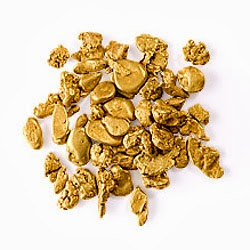 of high inflation, market volatility and geopolitical uncertainty. Gold is a finite resource, and therefore increases in value over time. Knowing this, many investors turn to the precious metal in an effort to protect their money. And those holding it in their portfolios were rewarded in December 2023 when the price of gold hit an all-time high of $2,135 per ounce! Analysts say that record price was driven largely by a weak U.S. dollar and expectations the Fed will begin lowering rates.
of high inflation, market volatility and geopolitical uncertainty. Gold is a finite resource, and therefore increases in value over time. Knowing this, many investors turn to the precious metal in an effort to protect their money. And those holding it in their portfolios were rewarded in December 2023 when the price of gold hit an all-time high of $2,135 per ounce! Analysts say that record price was driven largely by a weak U.S. dollar and expectations the Fed will begin lowering rates. 